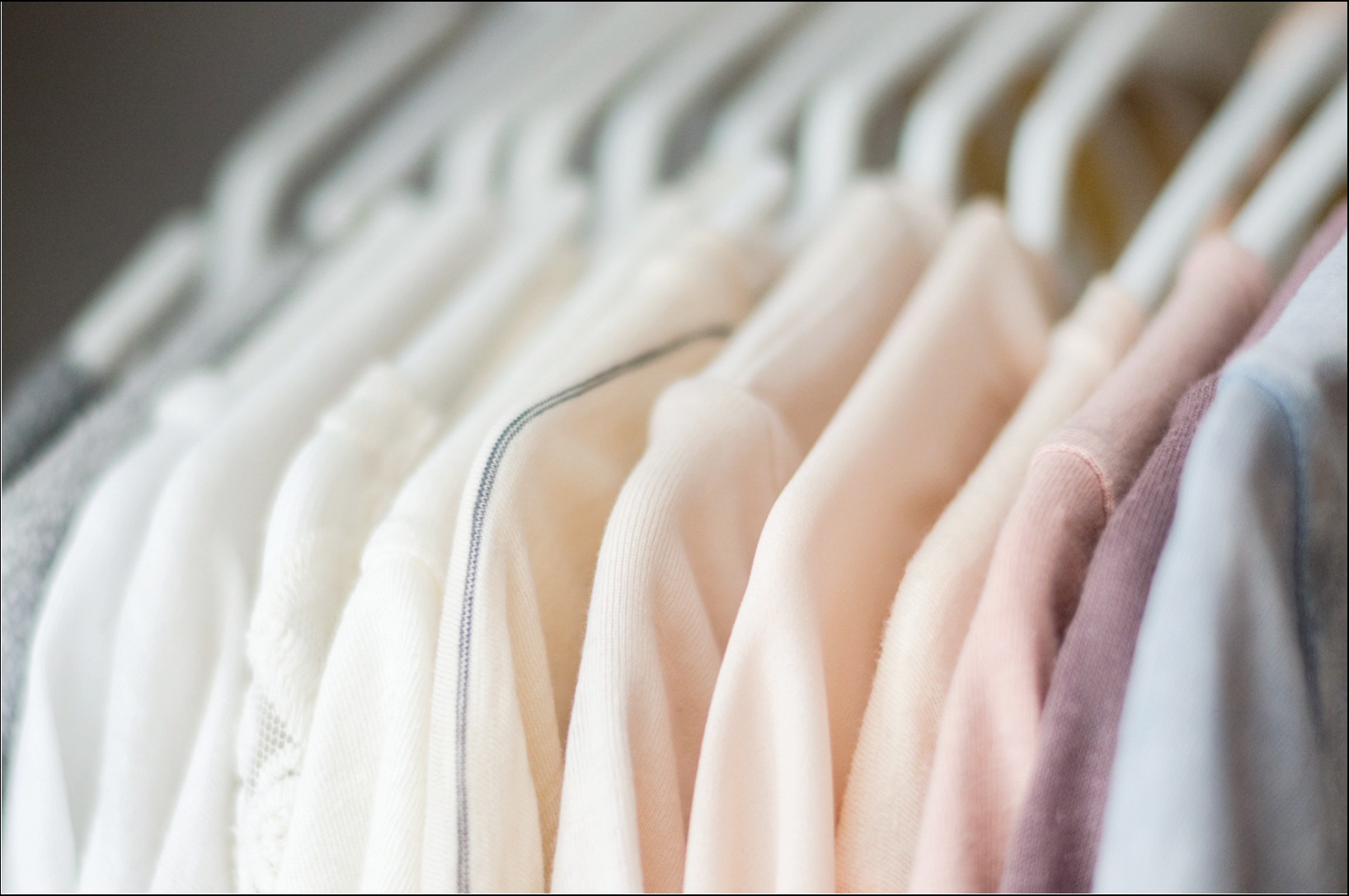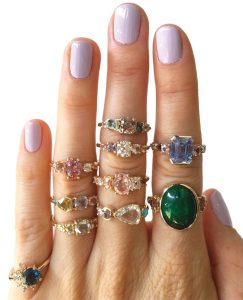It was my junior year of high school when I first knew. I was shopping for a prom dress, and I was repulsed. Gowns dripping with sequins, glitter and tulle were bursting from the racks of the local department stores. This wasn’t me, I was a minimalist.
I wanted something solid. Something simple. Something without a single shred of reflective material. My 17-year-old brain couldn’t help but wonder if I was boring. Now I know that I was just a minimalist in the making.
There are two types of minimalism.
The first is the visual aspect; what most of us think of when we picture minimalist style. Wardrobes consisting of nothing besides white, black and gray; an aversion to ornamentation.
Then there’s the behavioral aspect of minimalism – the act of purging your belongings down to the essentials, of owning no more than you actually need. Here’s a radical thought: I think that true minimalism is a combination of the two.
However, in the fashion sphere, minimalism has largely existed on a purely aesthetic level.

Fashion blogs and publications promote an overbearing amount of luxurious “essentials” that would be unrealistic for the everyday minimalist to purchase. There’s overwhelming pressure to buy more and more pieces to vary your minimalist look – something that is antithetical to the entire idea of minimalism.
Kim Kardashian is a perfect example of this form of minimalism; her outfits are consistently neutral and pared down, but you just know she has a closet of thousands of expensive items back home.
This strain of minimalism can be problematic for the frugal millennial, who wants to incorporate both a minimalist aesthetic and a minimalist outlook with her wardrobe. Here is a selection of tips so that you can own less, save money and look the part.
Purge, Reassess and Sell
The first step toward obtaining a minimalist wardrobe is to, without a doubt, get rid of anything that is not doing you justice. For millennials, this isn’t always as easy as it may seem — many don’t have the financial confidence to trash half of what they own. It doesn’t have to be this way, though.
“Go through your current wardrobe and see what doesn’t fit, what doesn’t work, what you don’t love,” says Robin Shliakhau, a minimalist blogger at Simplify and Pursue. Shliakhau recommends eliminating items that are very similar, because we tend to be drawn to a specific item over and over again.
Once you’ve gathered your rejects, see what’s still in good condition – many people don’t know that there are extremely easy ways to make money for their clothes. Both Buffalo Exchange and ThredUp have mail in programs where you can send in your old clothes for free and receive a check in the mail soon after for whatever they take. This is perfect for freeing up closet space and making money for a couple of new, long-lasting purchases.
Pick a color palette
One of the biggest misconceptions about minimalism is that color is the enemy. Minimalism isn’t about ostracizing color; it’s about streamlining it.
“Identify what your favorite colors are and what works best for you,” says Victoria Brauer, a Milwaukee-based minimalist blogger at Simple By Victoria. “Then work your wardrobe around that. I find this saves money because I’m not trying to match several different colors with things. Stick with neutrals, and then pick a few of your favorite colors to spice it up.”
“Once I made the lifestyle change, the freedom I felt from minimalism was immediate.”
—Robin shliakhau, minimlist blogger for Simplify and Pursue
Quality > Quantity
If there’s one commandment to minimalism, this is it. Regardless, many young people can’t resist the magnetic pull toward the fast-fashion dynasties we know as Forever 21 and H&M. The truth is that some shoppers are just not aware of minimal brands that are affordable and long lasting. Madewell, Everlane, Uniqlo and yes, even Gap, the OG of minimalism, are a few to start with. Prices are generally well under $100, and because these brands are not pushing out items at the speed of light, there is a greater emphasis on long-lasting styles and materials.

Because, are those 13 tank tops truly bringing you happiness? “I like material things as much as anyone,” says Graham Hill in his now-viral New York Times op-ed titled “Living With Less. A Lot Less.” “But my experiences show that after a certain point, material objects have a tendency to crowd out the emotional needs they are meant to support.”
Have a shopping game plan
“We all have those impulse buys where I’m like ‘What was I thinking, this is not my color, it looked good on the model,” Shliakhau says. So how do you avoid that? Realize your bad shopping behaviors.
One of the greatest threats to your minimalist wardrobe is frivolous shopping —going to the mall just to browse or snapping up a load of cheap items from the sale section. The key to minimalism is intentionality —shopping with purpose. Know what you need going in. And for the items you do buy, consider their staying power. “I would recommend buying classic items instead of focusing on trendy styles. They’ll last longer,” Brauer says.
Would I take this on vacation?
We all know the feeling of wanting to pack our hottest pieces for a weekend trip. Get out that carry on suitcase if you need to, and ask yourself what you would take. This is a fantastic exercise to help you realize what’s truly important to you – what should take precedence in your closet. Because, after all, that’s what minimalism is all about, isn’t it?
Stripping down to the essentials, being mindful and being content with what you have. And the benefits of this practice are abundant.
“Once I made the lifestyle change, the freedom I felt from minimalism was immediate,” Shliakhau says.
Maybe your mom was right. Maybe less really is more.












Be First to Comment